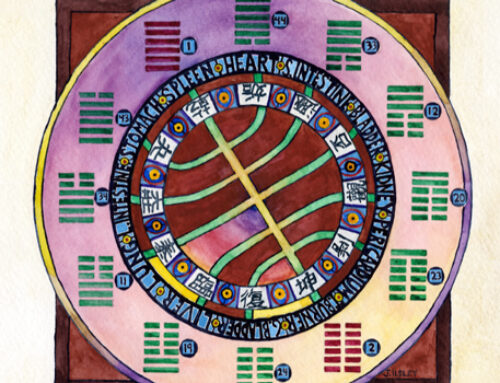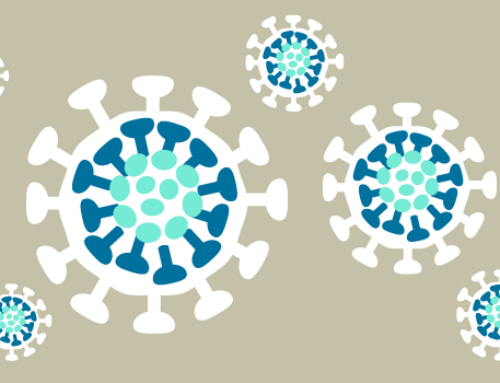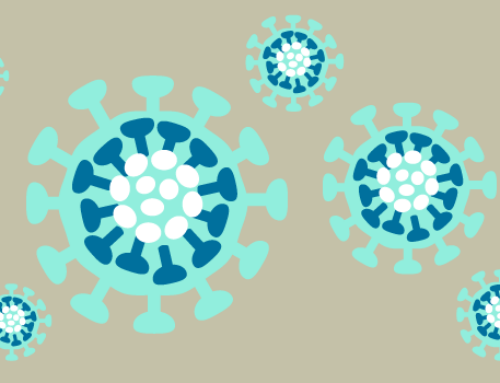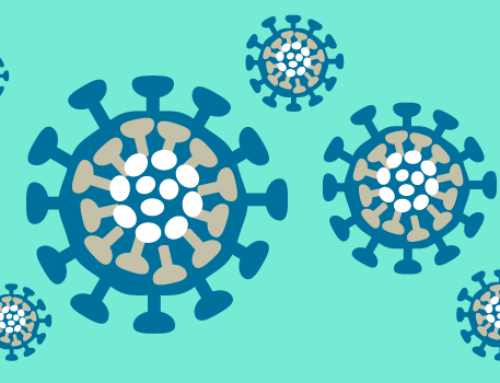By Huang Gongxiu, Zhang Xichun
Translated by Heiner Fruehauf
National University of Natural Medicine, College of Classical Chinese Medicine
The following translations are extracted from chapters about the formula families, from the self-published volume A Clinical Handbook of Chinese Herbal Formulas (2nd Edition) by Heiner Fruehauf. The 1st Edition is no longer in print.
By Huang Gongxiu
Aconite primarily enters the vital gate of life (mingmen). Its nutritive essence is pungent and extremely hot. Aconite is purely yang in nature and thus toxic. Its function is to move being confined to one place, so it is known to move through all twelve channels, and there is no place in the body it can not reach.
Aconite is the primary material for the tonification of the true prenatal fire lodged within the gate of life. It is therefore indicated for all conditions involving chronic and deeple entrenched cold. All sources thus list it as an herb that can treat severe disorders accompanied by cold extremities, hiccoughing, nausea, regurgitation of food with diarrhea, cold types of diarrhea, severe bouts of diarrhea (as in Cholera), cramping, wind obstruction, masses and accumulations, and disorders of the governing vessel manifesting in stiffness and ridgidity of the spinal chord. It is also mentioned as a remedy for chronic infantile convulsions, greyish papules, and skin ulcerations that do not heal–as long as the underlying problem can be clearly identified as a cold syndrome.
In combination with qi tonics, aconite pursues a dispersed original yang; in combination with dispersing materials, it opens the pores to expel wind and cold from the inside; in combination with warming materials, it eliminates damp cold. Some books even go so as to say that in combination with blood tonics, aconite has the ability to moisten the deficiency of original yin. The reasoning behind this approach is that yin and yang are interdependent, and that the tonification of yang will therefore also benefit the body’s yin. It should be noted in this context, however, that in cases with signs of complete water exhaustion and fire effulgence, the usage of a hot and pungent and purely yang material such as aconite may aggravate the condition. Rehmannia Eight Formula (Cuishi Bawei Wan) is a good example where aconite is employed as a guiding herb in the context of yin tonification, approaching yin restoration through the yang aspect. Zhu Danxi, on the other hand, held the opinion that aconite is too intense, has no tonic effect, and may even kill people. This view seems a little bit extreme, but it is certainly correct to be cautious and take the herb in the form of cool rather than hot decoctions when there is evidence of an extreme yin syndrome that is accompanied by signs of false yang.
If prescribed as a dispersing agent, aconite works best in its raw form. To bring out its tonic properties, it should be used in processed form. The best kind of aconite grows in the Western region of Sichuan.
From Huang Gongxiu, Bencao qiuzhen (Exploring the True Meaning of the Materia Medica), Qing Dynasty 1769
© 2012 Heiner Fruehauf
By Zhang Xichun
The nutritive essence of aconite is pungent, and its functional nature is intensely warming. It is a prime herb to tonify and assist the body’s original yang. Its force can both ascend and descend, and reach the deepest crevices of the body’s interior as well as disperse its affect to the surface. Due to these properties, aconite can resolve all situations of chronic and deeply entrenched cold that has coagulated in the organ networks, inhibited the tendons and bones, and obstructed the channels, collaterals, and blood vessels. It can open up and restore proper movement in all of these crucial passage ways. Within its action of warming and opening, aconite also has a strong astringing affect. It can therefore be used to treat profuse sweating with signs of yang-collapse (profuse sweating should always be differentiated into yangcollapse and yin-collapse; the yang-collapse patient exhibits a cold body, while yin-collapse cases exhibit signs of heat, and the importance of distinguishing the two in clinical practice cannot be emphasized enough. If there is yang-collapse with cold, use aconite with cornus and ginseng; if there is yin-collapse with heat, use raw rehmannia with cornus and ginseng), diarrhea due to intestinal cold, yang deficiency in the lower warmer accompanied by signs of escaping yin, and cold essence syndrome manifesting in the form of spontaneous seminal emission. Also, the ancient sources state that aconite is an excellent material to tonify the ministerial fire that lodges within the vital gate of life; it is this strong boosting affect on both the imperial and ministerial fire which accounts for its ability to cause the heart to beat faster.
Once it is planted, the aconite root will develop lateral offsprings in the course of one year. In this fashion the original aconite seedling turns into what is called wutou in pharmacological terms. Wutou is not as hot as the more commonly used offspring (fuzi), but its ability to open up the body’s passage ways is stronger. It is for this reason that the classic source book Essentials from the Golden Cabinet recommends Wu-tou Combination (Wutou Tang) for severe and migratory arthralgia; for heart pain that radiates toward the back, it recommends Wu-tou and Kaolin Formula (Wutou Chishizhi Wan); and for intense abdominal pain it recommends Wutou Formula (Wutou Jian) or Wu-tou and Cinnamon Combination (Wutou Guizhi Tang).
If the aconite root is planted, but does not produce any offsprings, and if it is only the original root that grows–very much like a clove of garlic that grows bigger by itself without producing any seedlings–then the final medicinal product is called tianxiong. Since tianxiong did not have to divide its power, its warming and tonifying affect is particularly strong, and it is for this reason that among the three aconite products it is this one that has been labeled “xiong” [fierce]. When trying to find tianxiong in contemporary pharmacies, one should look for the pieces of black fuzi that are larger and a little darker than the regular fuzi. Since the power of tianxiong is greater, its color is usually different from regular aconite. Fuzi, wutou, and tianxiong are all incompatible with pinellia. Chen Xiuyuan once described aconite in the following way:
‘Aconite can relieve all types of cold damp conditions. Particularly Zhang Zhongjing’s method of using aconite to relieve cold damp disorders is amazing. Yang is the force behind our procreation and growth, and if yang collapses (wang yang), we will die. The pictogram that is most often pronounced ‘wang’ can actually be read in two ways: one being ‘wang,’ meaning to escape; that is how the term is being used in the phrase ‘chu wang’ [escape outwards] in the ancient text, Autumn and Spring Annals. The other possibility is to pronounce it as ‘wu,’ meaning nothing, and this is how Confucius used the term in his Analects when he said ‘there is something because there is nothing,’ or Mencius when he wrote that there was ‘nothing superfluous.’
In a situation where diaphoretics were prescribed incorrectly, bringing about profuse sweating and yang-collapse, Zhang Zhongjing recommends Aconite, Ginger & Licorice Combination (Sini Tang), Vitality Combination (Zhenwu Tang), or other remedies of this kind. In cases where excessive vomiting or diarrhea is causing markedly cold extremities, Zhang Zhongjing recommends Licorice, Aconite, and Ginger Pulse Combination (Tongmai Sini Tang) or Ginger and Aconite Combination (Jiang Fu Tang) to urgently address this situation.
In case the surface yang of the taiyang system floats precariously on the outermost surface producing fever, aconite has the ability to link it with the astringing energy of the shaoyin system and the heat symptoms will naturally disappear. If the inner core of the shaoyin network is diseased, aconite can entice the energy to come up from below and make the pulse reappear; it opens up the entire body and eliminates the cold crisis.
In combination with the bitter peony and the sweet licorice aconite can tonify deficiency; in combination with the bitter peony and the bland hoelen it can warm and stabilize–with a wondrous force that can not be emphasized enough. I would like to note that Zhang Zhongjing’s use of aconite seems to differ from the way that the herb was first introduced in Shen Nong’s Herbal Classic. Does this mean that he made up these properties of aconite? The fact is, the Herbal Classic states that the nutritive essence and the qi of aconite are warming and intensely toxic, and these words appear to have alerted Zhongjing to the intense affect of aconite. “Warm” means that it contains the energy of wind wood in the East; the extreme of warm, moreover, is hot, and this is what is meant in the Inner Canon when it states that “above, shaoyin is ruled by the imperial fire.” Pungent is the flavor of dry metal in the West; the extreme of dry is moist, and it is this principle that the Inner Canon refers to as “use pungent flavors to moisten this condition.” The point is that if the functional nature of anything is carried to an extreme point, it will be toxic, and when it is so extreme that it cannot become intensified any more, then it is called intensely toxic. By looking at the label “intensely toxic” we know therefore that the warming affect and the pungentness of aconite is extreme.
Zhang Zhongjing has two ways to utilize the warming affect of aconite: one is to combine it with hoelen, peony, and licorice, the other with rehmannia and alisma. During the winter, the warming affect of aconite can be complemented with the heat of ginger and cinnamon, or the intensity of ephedra and asarum, but these combinations should be avoided during the summer months. There are, moreover, three classic ways to employ the pungentness of aconite: Cinnamon, Aconite, and Ginger Combination (Guizhi Fuzi Tang), Cinnamon, Aconite, and Ginger Minus Cinnamon Plus Atractylodes Combination (Guizhi Fuzi Qu Gui Jia Baizhu Tang), and Licorice and Aconite Combination (Gancao Fuzi Tang) are pungent and drying, designed to expel wind damp; Aconite Combination (Fuzi Tang), Peony, Licorice, and Aconite Combination (Shaoyao Gancao Fuzi Tang) are pungent and moistening to tonify the water organ; Leek, Ginger, and Aconite Combination (Baitong Tang), Licorice, Aconite, and Ginger Pulse Combination (Tongmai Sini Tang) plus Urine and Pig Gallbladder Combination (Renniao Zhudanzhi Tang) utilize the astringing quality of the autumn qi in the West, thus restoring and strongly stabilizing original yang.
Zou Runan described aconite in the following way:
‘Wutou represents the mother yin which is already depleted of the procreative force. Tianxiong represents the solitary yang which is unable to procreate by itself. Fuzi is the seedling of wutou and tianxiong, and thus contains both yin and yang. Since the process of procreation has already been completed in the mother yin, it is hollow inside and utilizes qi to get its affect. The solitary yang that is unable to procreate is solid inside and uses its essence to cause its affect. Qi is in charge of dispersing, essence is in charge of astringing and storing. The dispersing aspect can reach the pores at the body surface, and therefore treats situations of wind strike with aversion to wind, continuous sweating, and coughing. The astringing and storing aspect can reach the bones and tendons internally, and therefore treats migratory arthralgia, cramping, unfirm bones and tendons, and a heavy feeling in the body with an inability to walk. However, since the nutritive essence of both wutou and tianxiong is pungent and their functional nature intense, both materials are used in very much the same manner, such as dispelling damp obstruction due to wind cold or breaking up accumulations and noxious qi.’
Fuzi contains the qi of both of these materials. It is solid on the inside, strong and firm on the outside, and grows by virtue of its qi rather than reliance on its mother plant. Therefore, disorders such as coughing due to wind cold above, masses and accumulations in the center, or atrophy, cramping, and knee pain below-there is not one of them that fuzi could not reach and cure. Because fuzi contains the essence of both wutou and tianxiong, and since it can manifest the advantages of both, its use is much wider than any one of them.
One could ask why, since all yang things have a tendency to float upwards, aconite has the ability to entice fire downward. It may be useful in this context to borrow the image of two candles that are lighted with their lower ends put against each other. If the lower flame becomes extinguished, there will inevitably be a streak of thick smoke that rises upwards and enshrouds the upper candle. Consequently, part of the upper flame will bend down the smoke trail and light up the lower candle again. Since the nutritive essence of aconite is pungent and intense and its qi fiercely strong, and since it tends to work via its qi, its action can appropriately be compared to the smoke that rises after extinguishing a flame–both can entice the fire to return downwards and stabilize it. The only thing to worry about is that if the burning fuel down below is already exhausted and the fire has nowhere to return,then it could entice the upper flame to go rampant and flare out of control. We should thus be aware that if the burning fuel is spent the fire will gather, and if the fire gathers symptoms of upward steaming will invariably develop.
I once treated a young woman who suffered from a symptom complex characterized by fullness and stuffiness in the upper burner, restlessness, poor appetite, a hard, board-like tension around her umbilicus, and the absence of her menses for two months. Her pulse was fine and wiry on both sides. Zhongjing has said that a wiry pulse on both sides indicates cold, and that a wiry pulse on only one side is evidence of phlegm-rheum. Her pulse profile, therefore, suggested to me beyond doubt that there was cold rheum in the upper warmer, and that there was cold accumulation below. The restlessness was caused by the abundance of cold qi in the abdominal region, forcing the original yang to float up. I prescribed my own Regulate Rheum Decoction (Liyin Tang), modifying it by removing cinnamon and adding 3 qian (9g) of aconite, and increasing the amount of peony to 5 qian (15g). After one dose the fullness and restlessness had completely disappeared. After one more dose, her appetite increased, and she felt that there was something very cold in her belly. I therefore decided to remove the peony and increase the aconite to 5 qian (15g). After that, I decreased the amount of dry ginger by half and kept increasing the aconite to 8 qian (24g). While the patient imbibed more than ten doses, she experienced bowel movements 4-5 times per day, excreting white colored cold accumulations. She continued to take one dose per day, until the cold accumulations had all been drained out, and after five days the frequent stools stopped naturally. After that I examined her pulse again and found a slippery pulse, particularly in the third [kidney] position, so I suspected that she was pregnant. I told her to stop taking the medicine for a while, and it turned out that she was indeed pregnant. So, even though aconite is usually said to harm the fetus, in this situation-even though the herb was taken in such high amounts and frequency–it appeared to have a stabilizing affect on the fetus.
From Zhang Xichun, Yixue zhongzhong canxi lu (Chinese at Heart but Open to the West: An Integrated Approach to Medicine), 1934
© 2012 Heiner Fruehauf
More Resources
Explore our Single Herbs Series that features monographs of a variety of herbs, located in the Clinical Information pages of this website.
 Our affiliate, Classical Pearls Herbal Formulas™, has high quality black and white aconite (fuzi) available in their line of single herbs. Their fuzi is grown in accordance with traditional farming/harvesting methods in Jiangyou (traditional growing area for all genuine and safe aconite produced in Asia), detoxified without the use of chemicals, and processed in accordance with traditional manufacturing techniques (hand-peeled, multiple rounds of soaking in brine, washing in freshwater, and steaming). View a video of Heiner Fruehauf on a trip to a fuzi processing plant that uses natural methods of growing and processing.
Our affiliate, Classical Pearls Herbal Formulas™, has high quality black and white aconite (fuzi) available in their line of single herbs. Their fuzi is grown in accordance with traditional farming/harvesting methods in Jiangyou (traditional growing area for all genuine and safe aconite produced in Asia), detoxified without the use of chemicals, and processed in accordance with traditional manufacturing techniques (hand-peeled, multiple rounds of soaking in brine, washing in freshwater, and steaming). View a video of Heiner Fruehauf on a trip to a fuzi processing plant that uses natural methods of growing and processing.
The video is located in the right hand column. You will be leaving this website.









Leave A Comment
You must be logged in to post a comment.